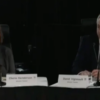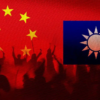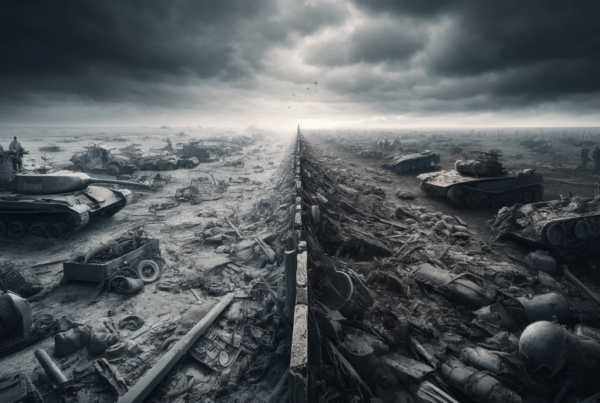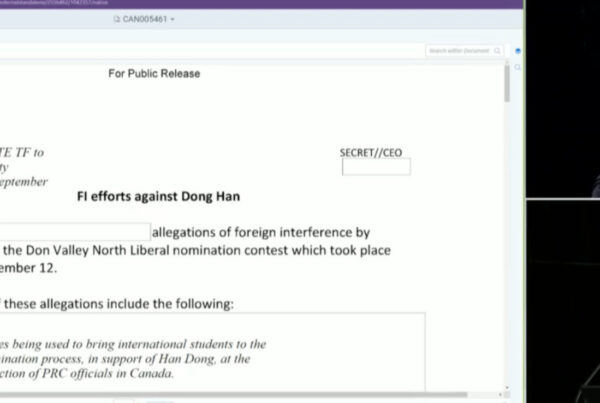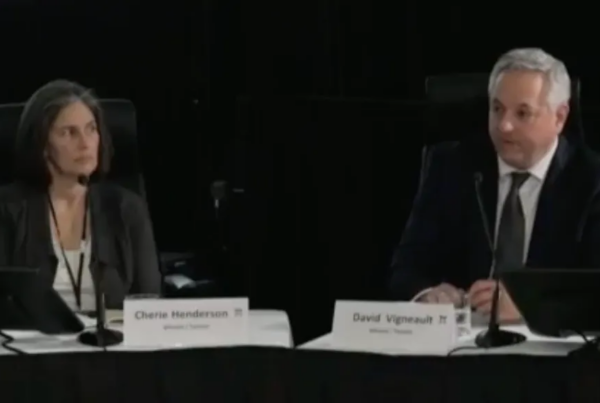Introduction
On June 23, 1985, Air India Flight 182 disappeared from radar screens while over the Atlantic, en route to London from Toronto. A bomb hidden inside a suitcase exploded in its baggage compartment, the aircraft lost control and crashed into the sea. The few who survived the impact drowned in the frigid waters. This act took 329 lives including 156 Canadians, 60 children under 10 years of age and 65 more between the ages of 11 and 20. [1] It remains the most devastating act of aviation terrorism to date.
On the same date as Air India Flight 182 was blown out of the sky off Ireland, a bomb inside baggage being transferred to another Air India jet exploded while on the tarmac of Japan’s Narita Airport. Two baggage handlers were killed.
Both bombs originated in Canada.
Authorities scrambled to investigate this terrorist incident and the groups known to have links to Sikh separatist violence in India. In the years immediately following these bombings, individuals tied to several terrorist groups were arrested; but not all those charged were successfully prosecuted. This made police wary of losing a conviction in the case – which was the most complex investigation ever undertaken in Canada. Over 15 years would pass before the RCMP announced that it was making arrests.
In October 2000, charges were laid against two individuals. One was a long-time associate of the Babbar Khalsa International (BKI), a group known to use violence in the name of “Khalistan”, an independent Sikh state they hoped to create in India. In February of 2001, Canadian authorities announced that one of the most notorious members of the BKI would also be charged in the Air India bombing. He was serving a ten- year prison sentence in Canada for manslaughter in the related Narita Airport explosion.
None of the three suspects have been convicted of charges related to the Air India bombing, as a jury must make that determination in accordance with Canadian law. As Canada’s police, intelligence and legal authorities approach the endgame in this complicated investigation, it would be appropriate to review the events that brought us to this point.
The death of 331 civilians in two bombings was only one ingredient in what was then an escalating international security crisis. [2] Yet the radically unorthodox and volatile situation was anything but straightforward. Resolving the situation in Canada and the Air India bombing would prove difficult for a variety of reasons:
- Organizations such as the BKI are the product of the political struggles taking place outside Canada’s borders. The root causes of these conflicts, although sometimes waged on Canadian soil, often remain outside the influence of Canadian diplomats and security officers.
- The dynamics of the conflict in India were complex. Both before and after independence, Sikh leaders had pressed for their own country to be created from the Punjab area of India where the majority of Sikhs are concentrated. By the early 1980s, the separatist cause had gradually become hijacked by its most radical and violent elements.
- The central government in India played a critical role in covertly promoting a number of terrorist groups in a game of realpolitik. The plans failed miserably as organizations New Delhi believed were under their control became incredibly violent in their pursuit of independence.
- Indian authorities again seriously miscalculated when orders were given to execute Operation Blue Star and assault the Golden Temple in June 1984. The temple is the Sikhs’ holiest site, built by one of the original gurus. Militants, whom India had a hand in supporting, turned it into a heavily fortified compound. The assault made the smoldering violence in India and Canada a much greater problem than it would have been otherwise.
- Pakistan saw the violence in the Punjab as an opportunity to attack its old enemy (despite the long and bloody history between Sikhs and Muslims) and began supporting terrorists in India and elsewhere.
The political climate in Canada during the 1980s also contributed to the long delay in laying charges.
- The Air India bombing took place a year after CSIS was created out of the RCMP Security Service. Bureaucratic tensions and organizational rivalries hampered the investigations.
- Intelligence gathering and analysis of the terrorist groups was complicated by the volatile nature of many of the targets. Groups in India and Canada, with regularity, would split and then compete (often violently) with each other. At other times, various terrorist groups would cooperate with others or their former comrades. A single individual identified as a leader within one organization, could become a strong ally with a second and a high-ranking commander of a third – a confusing situation for any investigator.
- Prosecutions of terrorist suspects were also compromised as the mechanisms for integrating CSIS’s information from covertly gathered sources into an open criminal trial proved to be inadequate.
- Groups such as the BKI alienated many Sikhs from Canadian society as legitimate organizations were tarred with the same brush as the militants were, preventing them from helping to defuse the situation.
- India did not hesitate to use disinformation and diplomatic pressure to persuade Canadian officials to take action against groups tied to the militants. Several Indian officials were asked to leave Canada as a result of questionable activities. Once this became public, militant sympathizers could easily discredit RCMP and CSIS investigations as being inspired by India.
The years immediately following Operation Blue Star were chaotic and often painful. Thousands of people of various faiths were killed in India, and many Canadians experienced personal loss because of the violence – not just the families and relatives of the Air India bombing.
Another sip of this poisonous brew is necessary to contemplate the lengthy and probably complex trial of these three suspects. Most of the ingredients in this potent mixture were the result of the intense political struggles transpiring half a world away. Unfortunately, several key ingredients are of Canadian origin.
Much has changed in the past 15 years; and many of the more radical elements of the separatist movement have declined in stature here in Canada — often through the intervention of members of the Sikh community. The threat has not been totally eliminated, nor has the controversy that pro-Khalistan militants produced between activists, police and security services, politicians and diplomats inside Canada.
This paper concerns a handful of groups who used violence to advance a political cause. It does not pass judgment on the merits of a different status for Sikhs inside India. Nor is it intended to denigrate Sikhs in general, or link Sikhism with political violence. Unfortunately, some past analyses tried to argue that the events of the 1980s were explainable by the Sikh religion itself. This is both wrong and offensive. This paper intends to show the multiple factors that contributed to the violence. As often happens when politics turn bloody, many can share the blame.
Background and the Roots of Conflict
Since Independence and Partition in 1947, Indian politics have been turbulent. Communal and caste tensions have sometimes escalated into clashes between various coalitions and with internal security forces. The central government always feels vulnerable, due to the diversity of its population, to claims of independence. New Delhi has always feared that one successful claim to enhanced status would trigger a domino effect with other ethnic groups within the fragile state. Therefore, any remotely significant independence movement is usually dealt with harshly, often making outside observers nervous about its scope and scale. Actors in Indian politics have also not been afraid to play high stakes realpolitik. The situation in the Punjab, the state where most Sikhs are concentrated, has been no exception.
The dominant political party representing Sikh interests after independence was the Akali Dal (AD). Prior to 1947, they had lobbied the British for an independent Sikh state but were turned down. Perhaps as many as a million people died and 10-15 million people were made homeless during the communal rioting that attended independence, and the heart of the maelstrom was the Punjab. Sikhs in the Pakistani side became a minority in a new Muslim state overrun with Islamic refugees from India. These were often thirsty for revenge, as Hindus and Sikhs had preyed on them inside India. (Both Hindus and Sikhs have historical grievances with Islam). There was much bloodshed and the Sikhs suffered their share.
In the new India, Sikhs lost the privileged position they held in the British Raj and in 1955 were led by the AD into rioting against Hindus. Partially assured by the high performance of Sikh troops in the 1964 war against Pakistan, New Delhi made several concessions to the AD. A state based upon the Punjabi language was created although the Sikhs would be a minority within it and the new state did not include all the territory held by the Sikh kingdom when it fell to the British in 1849.
Indian politics were dominated for the next several years by the constant states of emergency being declared by the Congress Party, then under Indira Gandhi. These declarations were utilized for blatantly partisan purposes. She was convicted of corruption in 1975 and defied the opposition who demanded her resignation. After another eighteen months of emergency rule, she was soundly defeated in a national election.
To return to power, Gandhi needed to shake up the political landscape of India. One of her first targets was the alliance that emerged between the Akali Dal and the Shiromani Gurdawara Pradbandhk Committee (SGPC), which oversaw the finances of Sikh temples, giving the AD access to these vast financial resources. Assisted by her advisors (some of whom were Sikh) Gandhi hatched a plan that would have made Machiavelli nervous. They would mount a political assault on the AD by quietly supporting and promoting an alternative Sikh voice that would be radically fundamentalist and uncompromising in Sikh politics. The ultimate objective of the Congress Party was to embarrass the AD by using their pawn to expose them as “frauds” and “soft supporters” of Sikh ideals.
The man chosen to fulfill this role was the now infamous Jarnail Singh Bhindranwale, then a moderately popular and charismatic religious leader. Behind the scenes, Congress Party handlers helped promote a new Punjab-based Sikh party for him, the Dal Khalsa (“party of the pure”). Even at this early stage, Bhindranwale was known to be both prone to religious violence and a strong advocate of an independent Sikh state. [3]
The Congress Party continued to bolster Bhindranwale’s stature among Sikhs in the Punjab. In 1978, the Nirankari sect (widely seen as “heretical” by many Sikhs) was to hold a convention at the Golden Temple of Amritsar. This outraged the majority of Sikhs, although the Akali Dal refused to block the event. Bhindranwale and his followers stepped in and confronted the “heretics” and violence erupted. Fifteen people were shot to death; twelve of Bhindranwale’s followers and three Nirankaris. Many people, including some Congress Party supporters, promoted the twelve as martyrs. Bhindranwale later became a suspect in the murder of a Nirankari guru. Fearing arrest, he immediately fled to the Golden Temple.
In 1981, another prominent Nirankari leader was murdered and a warrant was issued for Bhindranwale’s arrest. He fled his residence — leaving behind many of his writings, which ended up being burned in a fire. This so outraged him that he turned on his Congress Party handlers and the police whom he held accountable for this act. [4] Bhindranwale eventually surrendered to police and violence ensued throughout the Punjab as his supporters randomly shot Hindu civilians and politicians. Police officers were also the targets of assassination attempts. Bhindranwale was released after the intervention of the Indian central government as a means of quelling the violence.
In a remarkably short period of time, Bhindranwale had manipulated the teachings of the Sikhs’ original gurus and created an armed and dedicated following. Initially, Sikhism began as a passive and egalitarian religion whose founder and first guru rejected the caste system of Hinduism. The threats posed by other ethno-religious groups, most notably the Muslim Moguls in the 1600s, threatened the new religion and its followers. The tenth and last guru, after generations of persecution, formalized a martial ethos within the Sikh religion. The readiness to combat oppression and risk one’s life for the faith was a duty passed on from the gurus to the new order, the Akalis. In the evolved tradition of the original gurus, the new order was to attack social injustice and political repression. This order is important in understanding the crisis of the 1980s in India and in Canada.
Nobody can argue that the extremism exhibited in our times is the true will of the original gurus. The Akalis were meant to protect Sikhs from tyranny and from invaders such as the Moguls, not kill innocent civilians. Yet this did not prevent the legends and mystique of the Akalis from being used to create legitimacy by organizations such as the DK and the BK/BKI. It was not uncommon for example, for members of the BKI to show up for their criminal trials or other events dressed in warrior’s garb of the 1600s.
By 1981, it was clear that the Congress Party had lost control of their pawn. Bhindranwale had established training camps at various temples and was recruiting more followers. One of the most important alliances he forged was with the All-India Sikh Student’s Federation – which also had a history of separatist-inspired robbery and murder in the Punjab.
In 1983, India’s military intelligence, the Research and Analysis Wing (RAW) attempted to infiltrate Bhindranwale’s organization, losing over 100 intelligence officers in the process. [5] Later that year, the murders of police officials reached the point where the central government stepped-in and took control of the Punjab. Indian policing operations were severely hampered by the massive network developed by Bhindranwale’s followers who could easily target any individual or police officer who acted against them. Through a combination of both intimidation and the rallying of pro-Sikh emotions, Bhindranwale moved into the Golden Temple, fortified it and made it his base of operations. Now constantly accompanied by heavily armed bodyguards, he felt that he was out of the reach of Indian authorities.
Claiming a fear that Bhindranwale would declare an independent Khalistan (the name of the militant’s idealized state) and call for support from Pakistan, Indian security forces surrounded the holy site. Bhindranwale refused to surrender and by June 6, 1984, security forces assaulted the temple in Operation Blue Star. Initially, the troops were ordered to use minimal force and refrain, where possible, from damaging the structure. However, the extremists were more heavily armed than expected and heavy weaponry was needed to dislodge Bhindranwale and his followers. Bhindranwale was killed in the engagement.
Operation Blue Star had a far-reaching impact among Sikhs in India and abroad. Many Sikhs were disgusted that the final assault occurred on the date that Sikhs celebrate the martyrdom of Guru Arjun. Hundreds of innocent pilgrims were celebrating the event at the temple when the assault began. While official death tolls were not believed, the number killed is estimated to be in the low thousands.
This combination of massacre and desecration gave a wider legitimacy to the militants than they could have ever attained among Sikhs under other circumstances. The attack reminded some Sikhs of the brutal repression their religion experienced under the Moguls.
On October 31, 1984, ethnic tensions were further enflamed when two of Indira Gandhi’s Sikh bodyguards gunned her down in revenge for the desecration of the Golden Temple. Anti-Sikh rioting ensued throughout India, killing hundreds of Sikhs (if not more) and forcing many thousands to flee to the Punjab. Both events contributed to the ability of the terrorists to escalate their operations against the Indian government over the next several years as outraged Sikhs looked for a way of striking back.
Additional Indian government intrigue in the Punjab was also evident. One vehicle for manipulating the political atmosphere in the state was a secretive organization called the “Third Agency”. Created in the early 1980s, its role was to encourage and provoke radical activists into committing acts of violence. Among the methods used to try and destabilize pro-Khalistan activists was the employment of agents provocateurs. The purpose of the operation was to clear a way for New Delhi to take “decisive action against terrorism” and provide India with “good leadership” [6].
A Plethora of Militants
Until Operation Blue Star, Bhindranwale’s Dal Khalsa was the dominant pro-separatist terrorist organization in the Punjab. His death in the assault allowed other groups to grow and perpetuate the violence. In the post-1984 period, the factionalism of the armed groups was very pronounced as various coalitions formed, split and competed at a furious pace.
Babbar Khalsa (BK): The BK was founded in India in 1978. Originally, its founder, Sukhdev Singh Dasuwal was a follower of Bhindranwale, but broke and formed his own group. One account indicates that he later tried to kill Bhindranwale. [7] Within several years, branches of the BK were established in a number of western countries, being most active in Canada and Britain. Outside India they operate as the Babbar Khalsa International (BKI). The BK were present at the Golden Temple in June of 1984 with Bhindranwale and his armed followers. Most of them left before the assault on the holy complex, putting inter-group rivalries over the defence of the temple. [8]
Philosophically, BK members concentrate on changing — or more accurately — controlling the lifestyles of individual Sikhs. [9] They were rarely hesitant about using violence and murder to enforce a strict fundamentalist code of discipline. Their strict interpretations of Sikh doctrine and practices have led some observers to note their similarity to a religious cult. [10] By the early 1990s, the Canadian-based Talwinder Singh Parmar had broken away from the BKI and formed the Azad Babbar Khalsa (“Independent Babbar Khalsa”).
Khalistan Commando Force (KCF): A new Panthic Committee (a united front of generally militant organizations) was established in the chaos after Operation Blue Star. The Khalistan Commando Force was created to be the military wing of the committee. [11] At this time, the KCF had approximately 400 fighters, but the BK stayed apart from the group. [12]
By early 1987, internal differences and egos split the newly created group: Gurbachan Singh Manochanal, one of the five original Panthic Committee members broke away and formed the Bhindranwale Tiger Force for Khalistan (BTFK). In 1988, members of the Bhindranwale family convinced another member of the new Panthic Committee to join them and form the Car Juhujharu Jathebande (CJJ). Another break-away group, the Khalistan Liberation Force (KLF), joined the CJJ after the death of its leader. [13]
The majority of splinter groups from the KCF fell under the influence of the BK. The KCF and its remaining sub-groups were the main armed coalition that offered an alternative the BK. The over-arching objective of the KCF was to mount an assault upon the Indian state, as opposed to the more fundamentalist campaign of the BK.
All-India Sikh Student’s Federation (AISSF): The AISSF was originally the student’s wing of the Akali Dal Party but had broken off in the 1970s. Several years prior to Operation Blue Star, Bhindranwale had made contact with its leader Amrik Singh, who was the son of his own teacher while he studied for the priesthood. [14] The organization had already established a reputation for robbery, assassination and bombings in the name of Khalistan. While cooperating with Bhindranwale, the AISSF also made inroads into Pakistan. Amrik Singh died in the Golden Temple during Operation Blue Star with Bhindranwale. Since then, the organization has fragmented into two major groups: one headed by Daljit Singh Bittoo and the other by Manjit (or Lal) Singh. The Singh-led faction posed the most problems for security forces in India due to their more violent activities.
Indian authorities have always believed that Manjit Singh had some involvement in the 1985 Air India attacks. In 1992, he was tracked down and arrested by Indian’s counter-terrorist police unit. Singh was charged with conspiracy to kidnap the granddaughter of Prime Minister Rao. At the time he was also a high-ranking member of the KLF. [15] After weeks of interrogation he allegedly confessed to living in Canada while the bomb that brought down Air India 182 was being assembled in British Columbia. [16] He is also reported to have lived illegally in Canada from 1984 to 1988. [17]
International Sikh Youth Federation (ISYF): The ISYF is the international arm of the All-India Sikh Student’s federation. [18] It was born in Britain in 1984 and soon expanded into Canada headed by Lakbir Singh Brar, who had family ties to Bhindranwale. [19] In 1988, it became plagued by intense divisions. Currently there are two significant factions of the ISYF. Brar stepped back from leadership in one faction, due mostly to the pressure being placed on him by Canadian immigration authorities. Competition between the two camps has been fierce over the control of both temples and Sikh community newspapers.
The Pakistan Connection
Indo-Pakistani relations have been hostile since 1947. As early as 1983, Indian intelligence suspected Pakistan was supporting the terrorist groups. Geographically, the Punjab shares a border of some 555 kilometres with Pakistan. Due north of the Punjab lies the disputed region of Jammu-Kashmir, where Pakistan’s Inter-Services Intelligence (ISI) has made no secret of its support for Muslim militants. Since the 1979 Soviet invasion of Afghanistan, Pakistan has been a base to train, arm and fund Islamic militants. This trend has increased over the 1990s. An interesting statistic emerges within the violent pro-Khalistan movement: seventy percent of its hard-core support comes from only 220 of the Punjab’s 13,000 villages. The vast majority of these are located close to the Punjab-Pakistan border. [20] To counter Pakistani influence in the Punjab, the Indian government began to build a fence and mount floodlights along the entire border in 1988.
Manjo Joshi has documented numerous occurrences that demonstrate a strong ISI presence in the conflict between the Indian government and pro-Khalistan militants: [21]
- In 1991, Indian authorities arrested Karim Hussain for smuggling weapons. These included AK-47 assault rifles, RPGs (a light anti-armour weapon) and light machineguns. He confessed that Pakistani sources put him in contact with Manjit Singh.
- The Indian government also arrested Tahir Jamal, the Secretary General of the Student’s Islamic Movement for assisting Manjit Singh.
- December 1992, Indian authorities arrested a top leader of the Hizbul Mujahadeen, Nishad Ahmed Shaikh, in the Punjab.
- Several prominent terrorist leaders are headquartered in Pakistan out of the reach of Indian security forces — including leaders of the various factions of the Khalistan Commando Force (KCF).
- Pakistan has allowed non-Indian militants and activists to enter the country, including members of the ISYF and Canadian Talwinder Singh Parmar, the leader of Babbar Khalsa International.
This alliance with Pakistan has confused outside observers. Historically, Muslim rulers ruthlessly repressed the Sikhs, and several of the original gurus were tortured and executed by Mogul emperors. This historic animosity was renewed in the 1946-47 Communal riots, in which hundreds of thousands of Sikhs and Muslims were killed by each other in the Punjab.
The Nadir of Violence in the Punjab
In the aftermath Operation Blue Star, there was an escalation in the quality of weapons and sophistication in attacks carried out by extremists — which led to a rapid increase in the death toll. Between 1985 and 1986, the vast majority of weapons used were of Indian origin. By 1987, more lethal weapons began making their way into the hands of the terrorists — including AK-47s. In 1988, Indian security forces began recovering general purpose machine-guns, sniper rifles, sophisticated electronic detonators, explosives and night vision gear. [22]
The crisis in the Punjab also took its toll on the political and social fabric of the Sikh population. Their traditional political party, the Akali Dal, had been rendered almost irrelevant. Other militant actions wore away at the religious structures of the province. By 1990, after applying considerable pressure to the SGPC and the religion’s most prominent leaders, militants briefly managed to take control of the priesthood.
The violence in the Punjab peaked between 1990 and 1991. In that period alone, terrorists killed more than 6,000 police and civilians. Some of the dead included 133 family members of police officers. [23] Militants began extorting Sikh civilians for contributions and began a systematic campaign of intimidation.
In 1990, the BK as well as several radical organizations proclaimed a new code of conduct in the Punjab: [24]
- The consumption of alcohol, cigarettes and meat was banned.
- Family planning would no longer be promoted among Sikhs, and seven doctors were shot for “disobeying” this edict.
- School uniforms would be in religiously significant colors and girls were forbidden from wearing skirts. In January of 1991, a school headmistress was shot for not making her students comply.
- Banks and media outlets were to favour Sikhs above other residents of the Punjab. On one day alone, thirty-one bank branches were torched for non-compliance.
- Newspapers were forced to print free advertisements for the BK and strict rules on how to favorably report on BK violence were enforced — either by killing the offending journalists or (more usually) the newspaper deliverymen.
- Punjabi Universities were to reserve 80% of their places for Sikh students.
Under a massive army presence, a Congress government was elected in the Punjab in 1992 (although protests, violence and intimidation kept many from actually going to the polls). The presence of the Congress Party was taken as a direct challenge to militants, who took to assassinating anyone representing the central government. To enhance the militants’ notion of moral behavior, their targets also included individuals involved in the business of alcohol and tobacco – beheading one government official for his “sins”.
India reacted to the upsurge in violence with a reorganization of its security services and an increased military role in the region. Aggressive counter-insurgency and counter-terrorist operations yielded dramatic results including: the capture of top figures in the BK; the killing of Canadian Talwinder Singh Parmar on the Indo-Pakistani border; the killing of the BTFK chief in February of 1993; and the capture and deaths of key figures in the KLF. These ruthless operations dealt a blow to the terrorist groups that they have yet to recover from.
Several human rights groups have questioned the methods used by Indian security forces. The so-called “encounters” caused the most concern. This was the euphemism used to describe the capture and interrogation of a suspected terrorist or sympathizer. After questioning, the suspect was taken and killed by police, who tried to make it appear as if he died in a gun battle with them.
Since 1992 several terrorist groups mounted limited operations against the Indian government. In 1995, the BK assassinated the Chief Minister of the Punjab (the KLF also claimed responsibility for the attack). [25] A bombing campaign was foiled in 1999 when a BK member was arrested with several detonators and 18 kilos of RDX – a military plastic explosive. Indian authorities allege that the intended targets for the planned bombings included administrative buildings and officials in the Punjab. The BK suspect, according to police, confessed to also having ties to the Khalistan-Kashmir Jihad Force. [26]
Pro-Khalistan Violence Comes to Canada
Armed confrontations and violence characterized many of the actions undertaken by Bhindranwale’s Dal Khalsa, the BK and the AISSF in India. This violence seeped into Canada well before Air India flight 182 was downed in 1985. Unfortunately, the criminality associated with their activities was initially diagnosed as a police problem, to be dealt with at a local level and on a case-by-case basis. June 1985 served as a wake up call to Canadian authorities as to the severity of the real problem.
As often happens, radicals who claim the status of a repressed minority elsewhere, begin their careers in Canada by brutalizing their own. Starting in the 1970s, newly arriving radicals — many with ties to the militants in the Punjab — were shocked at the extent to which the existing Sikh community had been assimilated into Canadian society. Having come from the Punjab where they had been fighting for their version of the Sikh identity, the toned-down practices of Canadian Sikhs were intolerable. Immediately, militants became self-appointed guardians of the expatriate community here.
Their first targets were the temples. Many of these activists were distressed at the way services were conducted, events run or even how meals were served. More importantly, temples and their well-run treasuries (often with substantial investments in real estate) were a readily accessible source of revenue to fund the fighting in the Punjab. This drive to take control away from the existing committees on several occasions turned violent. In 1978, the torture and killing of Beant Dhalawi demonstrated the lengths to which some militants were prepared to go. A C-clamp was placed on his skull and slowly tightened, eventually causing his excruciating death. [27]
The BKI in Canada
While all major pro-Khalistan terrorist groups have some presence in Canada, the organization that posed the most serious concern for authorities was the Babbar Khalsa International. [28] After the bombing of Air India in 1985, BKI radicals immediately became suspects in the eyes of Canadian authorities. The investigation of the terrorist bombing, already a daunting task, was further complicated by the recent creation of the CSIS out of the RCMP’s Security Service — which had investigated and collected information in the areas of counter-subversion, count-terrorism and counter-intelligence.
The actual separation of the service into a civilian organization took place only a year before Air India Flight 182 was destroyed, but inter-service rivalries between the RCMP and CSIS developed quickly. Both federal bodies were also confronted with a radically new type of security threat unlike the FLQ, Eastern Bloc spies or Middle Eastern terrorist groups that the RCMP had encountered previously. The linguistic and cultural hurdles posed by the investigation would further complicate policing and security operations.
Within five months of the Air India bombings, the RCMP launched a series of raids across British Columbia. These raids targeted members and supporters of the BKI, as well as figures in the ISYF. The raids were precipitated by fears that the two prime suspects, Talwinder Singh Parmar and Inderjit Singh Reyat, were about to leave the country. Parmar led the BKI and Reyat was hi



